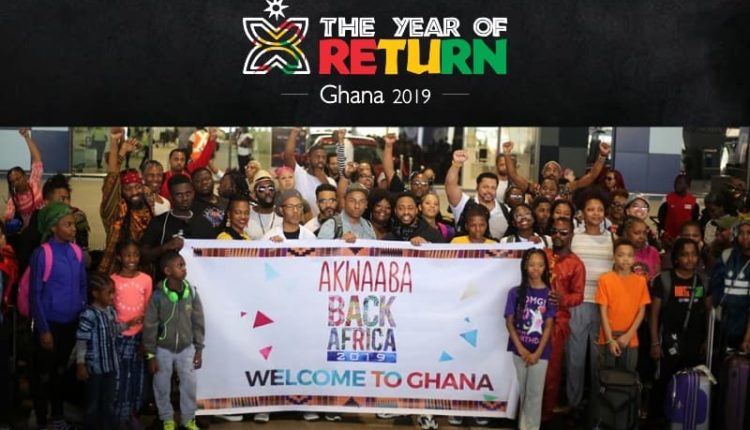The year of return: a disconnect of the Northern half of the story
The “Year of Return” has received myriad definitions, propositions and explanation by different schools of thought. In effect, the convergence of thought provides that the year of return symbolises a critical landmark of what some have argued represents a spiritual and birth-right mission of the Global African family, back to the continent to mark 400 years of the arrival of the first enslaved Africans in Jamestown, Virginia.
This horrific if not barbaric historical accounts are usually recounted as a sordid and sad period, when the active, potent and industrious sons and daughters of Africa were forcefully taken away: subjecting them to unimaginable deprivation, humiliation and torture.
August 2019 marks 400 years of this dent on the social fabric and conscience of the African people. In view of this, the government and people of Ghana fashioned out this program of the ‘Year of Return’. This is apt due to the fact that, Ghana was a major hub for the transatlantic slave trade from the 16th to the 19th centuries.
Since August 2019, we have witness great personalities fly in and out of Ghana to commemorate history which has become our identity. This has brought about some real good economic dividend to the nation, enhanced our statecraft and deepened the contours of Ghana’s fine stable political environment. Even though there is a current partisan debate on how much is raked in so far, both sides of the political divide have not questioned the relevance and impact the Year of Return has brought us as a nation.
While this is an avenue to showcase Ghana, its culture and historical artefacts, same presents us the opportunity to tell the story in full; capturing the unscripted stories, exhibiting the rejected if not forgotten sites that complements the slavery enterprise and more.
In the past months, Ghana has been inundated with the influx of Africans across the globe visiting. The only areas that are featured are the forts, castles and dungeon in Central and greater Accra regions. In fact those areas are but ‘exit terminals’ for the slaves. I am not underestimating these sites at all; how can I possibly suggest that, the ordeal of our ancestors were any less important. For instance, history tell us that in the dungeons, there were only two rooms in it. Each dungeon containing in excess of 150 slaves with only three small windows which led to many people died in the dungeon before the journey.
However, in the eighteenth and nineteenth centuries, Salaga which is in the East Gonja District in the Northern region served as a market town for slaves. The Salaga slave market was an important market from where slaves were transported to the coast for export. It should thus not amaze you to find a market in Jamestown in Accra called the “Salaga Market. It will interest you to know further that, the Pikworo slave camp which was founded in 1704 and was active until 1845 (Siakwah, 2018) was equally an active site in the slavery commerce. Both oral written accounts corroborate to the fact that, Pikworo was later relocated to Paga Nania, in the Upper East Region of Ghana. It was originally developed as a slave transit center where slaves were auctioned (am not talking about vehicles or animals but human beings auctioned with impunity) and later resold in the Salaga Slave market.
These sites are left to rot without the state through the Ministry of Tourism and its allied stakeholders failing to maximize the huge economic potential. The year return was the opportune moment we could show to the world and some uniformed Ghanaian that northern Ghana is an undisputed part of the slavery business narrative four centuries ago.
It was an opportunity for these sites to receive face lift with regards to maintenance and funding among others as same has been the case for the castles, forts and dungeons down south. This was also a great opportunity to united Ghana. We are a country so polarized politically, thus if our southern compatriots will appreciated that, the sad, sordid slavery history of our country and for that matter Africa connects us all and not only those in Cape Coast or Accra, our stereotypical viewing of each other will change for the better.
The year may be ending but I still believe tourist can still come to northern Ghana. I call on the African community around the world to stretch their visits to Ghana to its northern part to appreciate the completeness of the story. There are incredible talents here in the north, there are aesthetic art you may have never seen before and the warmth of the people will offer you the companion and comfort you may have never experienced. Let make slavery narrative complete.
God bless you for reading.
All omissions and typographical errors are mine.



